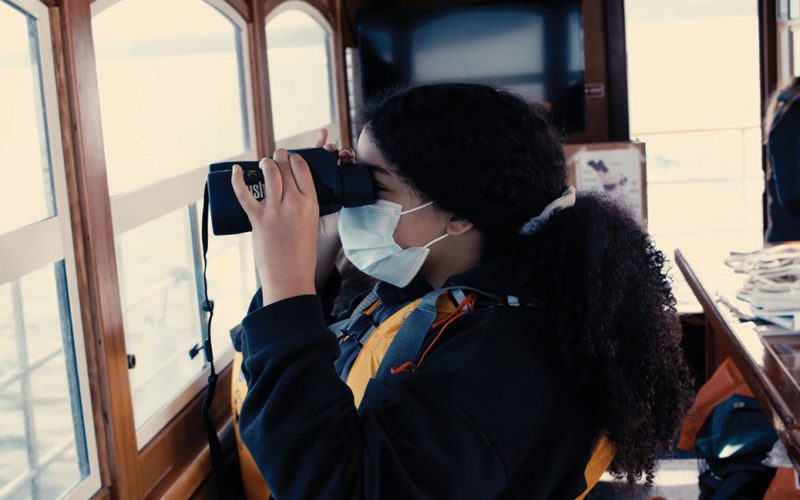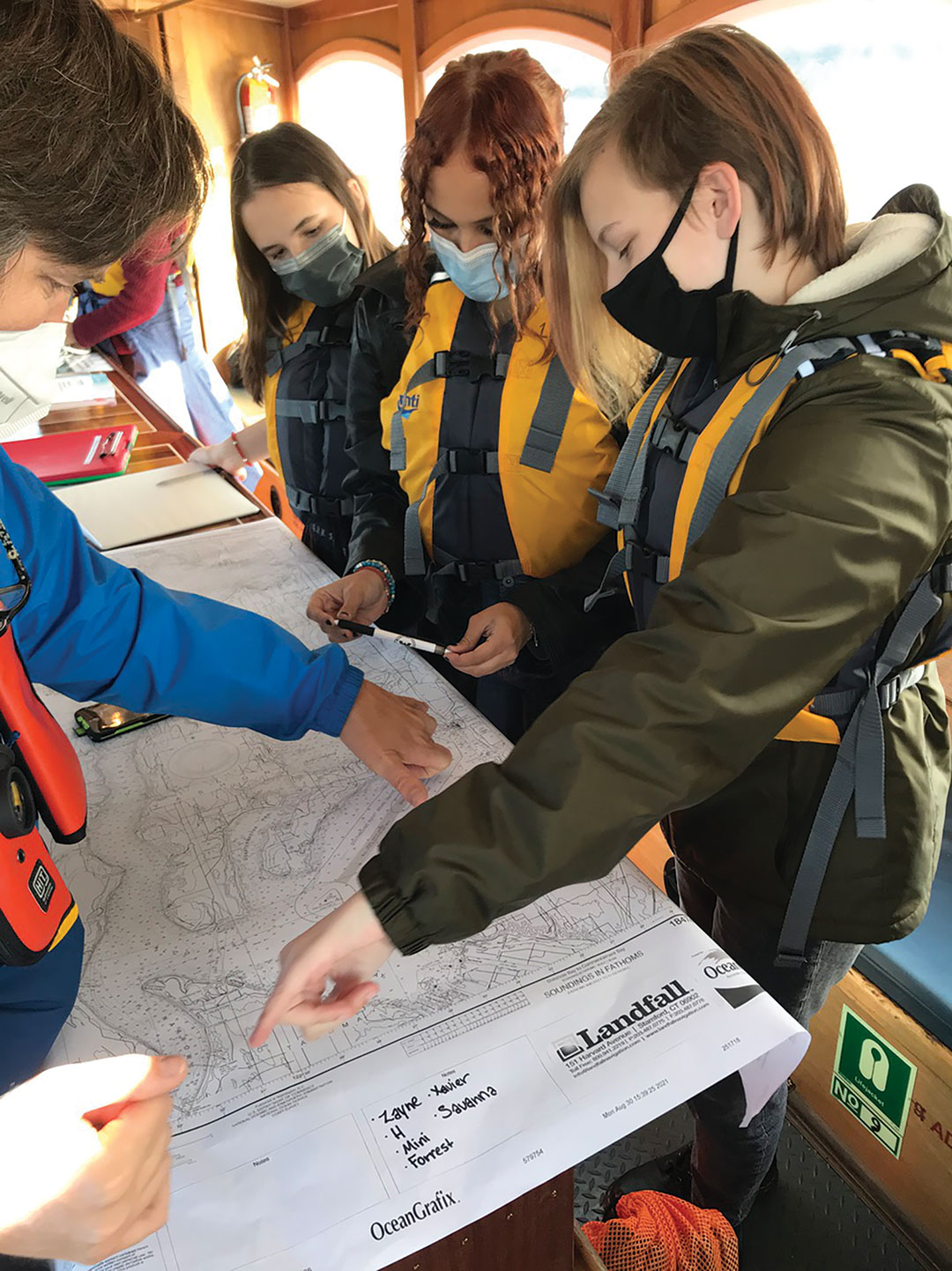
Training – Maritime High School
Seattle-area maritime high school introduces students to marine careers
Puget Sound is home to the nation’s largest ferry operator, a vibrant tugboat and barge sector, and busy ports that handle cargo from around the world. But in a region increasingly dominated by technology firms, the maritime industry can be something of an afterthought.
Maritime High School, located just south of Seattle in Des Moines, Wash., is trying to change how students think about the ocean and the maritime trades. It offers traditional math and language courses alongside hands-on learning opportunities on and around the water.
Tremain Holloway is the inaugural principal of Maritime High, which is part of the Highline Public Schools district covering five diverse communities around Seattle-Tacoma International Airport. Under his leadership the school emphasizes a hands-on, competency-based education.
“I believe we don’t just learn by doing, but also by reflecting on what we do,” he told Professional Mariner during a recent interview in Seattle.
“When it comes to education, the traditional mindset is rote memorization, which doesn’t necessarily help a student progress and be successful. To me, it is about how do we learn by doing and while doing, and also reflecting on that learning so we can be articulate about it and apply it to the real world.”
The concept for a maritime-specific high school emerged in 2018. Port of Seattle Commissioner Ryan Calkins was judging an academic competition at the highly regarded Raisbeck Aviation High School when the idea came to him. Why not open a similar high school focused on the maritime trades?
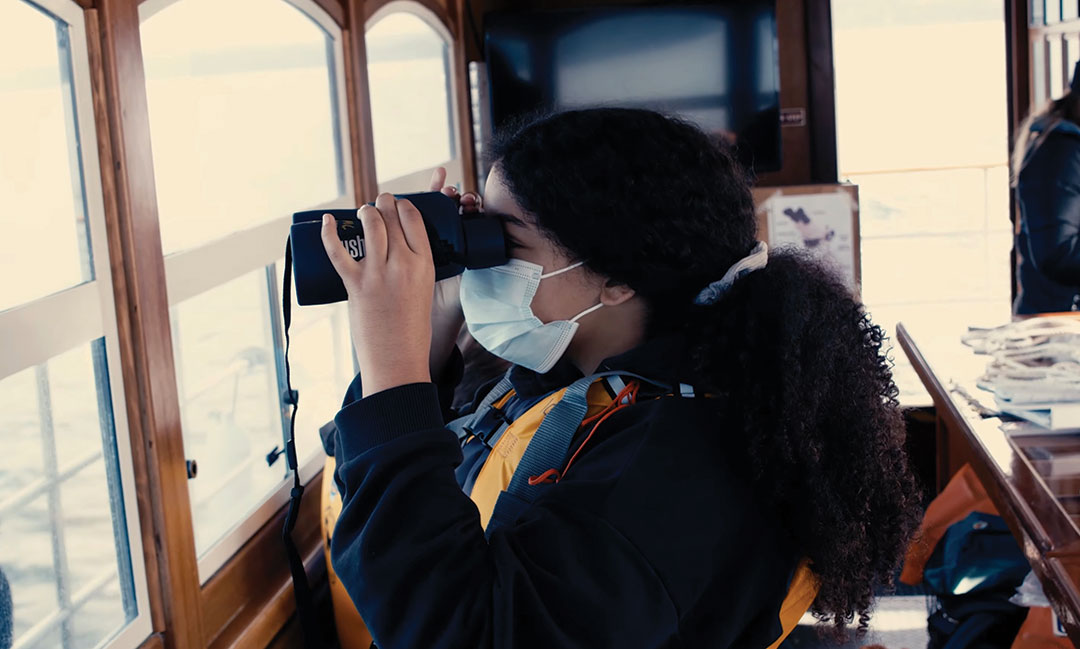
There were multiple motivations behind the idea. One centered around introducing local students to the water, which is a primary part of life around Puget Sound but is not accessible to all residents. Another was the need to attract workers into the maritime fields as mariners and other marine professionals approach retirement age. The idea garnered plenty of support but also some concerns around the logistics of building a new public high school.
Supporters convened a daylong meeting in 2019 that brought many disparate interests together in one place. Educators, parents and community leaders worked with representatives from the maritime community to build a framework for the new school and a task force to sustain the momentum.
Calkins worked alongside the nonprofit Northwest Maritime Center (NWC), the Duwamish River Community Coalition and Susan Enfield, then the superintendent of the 18,000-student Highline Public School District, in a core group focused on bringing the school to fruition.
The arrival of Covid-19 in March 2020 threatened to derail the project. But the district and its supporters pushed forward. They received special approval to use an educational model that focused on project-based learning and mastery of a subject rather than typical A-through-F letter grades.
Maritime High formally launched in fall 2021 with about 40 students in their freshman year. Its enrollment for the current school year has risen to 90, and the school is on pace to reach its goal of 400 students by 2025.
The school has an active advisory board that includes representatives from the Port of Seattle and maritime companies such as Manson Construction. Maritime High also has received support from local maritime companies. Saltchuk Marine, Foss Maritime and NorthStar Energy together donated $500,000 to help the school grow toward its enrollment goals.
“It is critical that we begin to pivot our attention, as an industry, to developing the next generation of workers,” said Jason Childs, president & CEO of Saltchuk Marine, said in a statement announcing the donation.
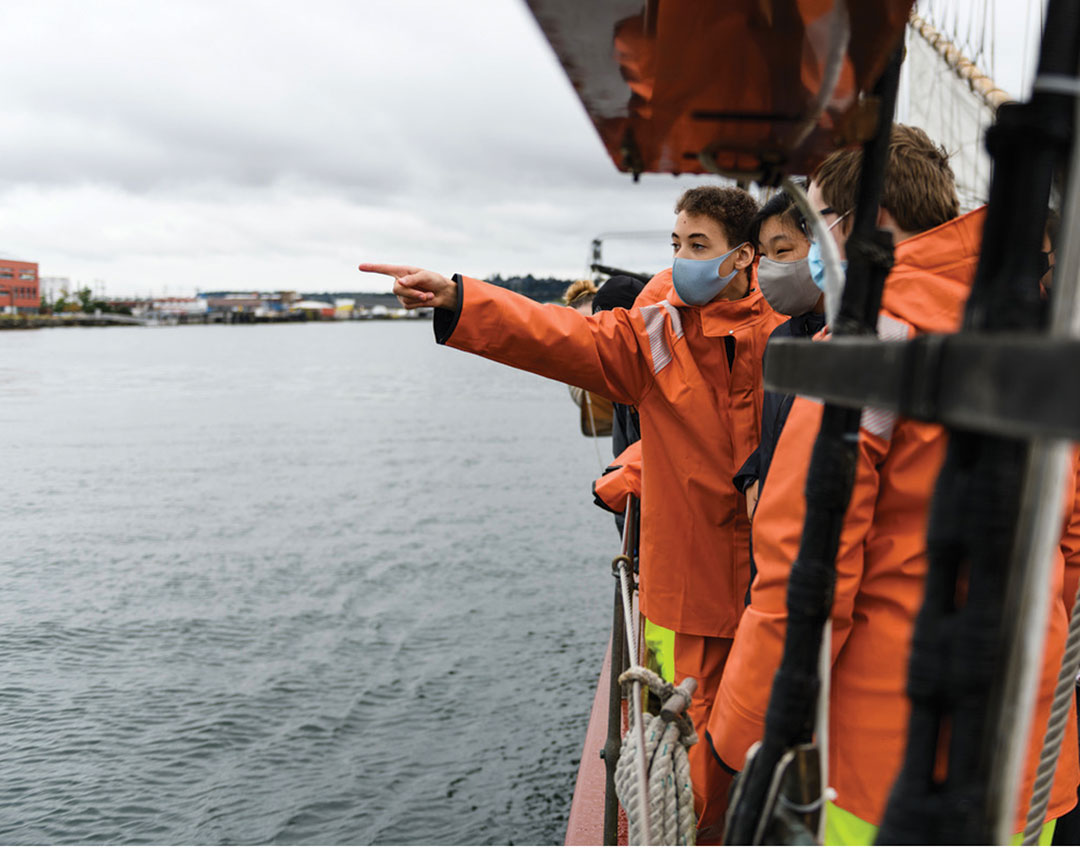
“We have kids here who have never been out on the water, who don’t understand how crucial logistics are to our country and our economy — especially here on the West Coast. Maritime is core,” Childs continued. “It’s our hope that students develop a passion for maritime and an understanding of the excellent career opportunities that are available at Saltchuk Marine companies and in the maritime industry.”
Holloway took a roundabout path to the maritime high school. His teaching career began in North Carolina before enrolling at Harvard University for a graduate degree in educational leadership. Like many of his students, he came to Maritime High without any maritime experience or background. The same is true for most classroom teachers, who focus on primary subjects such as math or language arts.
“That is what is so great about our partnership with the Northwest Maritime Center. They provide a lot of the fieldwork for our kids,” Holloway said.
“We have the skillset and knowledge to teach to the curriculum. But what is really helpful is … that people within the industry are looking at the projects our teachers are designing and incorporating a maritime component,” he added.
Northwest Maritime Center is a regional nonprofit based in Port Townsend, Wash., on the Olympic Peninsula. It offers a wide range of programs and workshops tailored to children and adults of varying skill and experience levels. It also partners with school districts throughout Puget Sound on a host of educational programs.
Its partnership with Maritime High School is based in three important areas. One is education. At least three NWC staff are based in Maritime High School to help teachers and administrators develop innovative, maritime-based programming. Maritime and non-maritime educators routinely meet to meld their respective expertise into the broader curriculum.
Another area is fundraising. Although Maritime High is a public school that receives the same funding as other Highline high schools, its programming is vastly more expensive. Fundraising overseen by the NWC helps the school pay for field trips, transportation and other costs associated with delivering a maritime education.
Thirdly, NWC uses its connections with the local maritime industry to keep it connected to the school. “The curriculum is really industry informed, and we have helped facilitate that,” said Jake Beattie, executive director of the NWC.
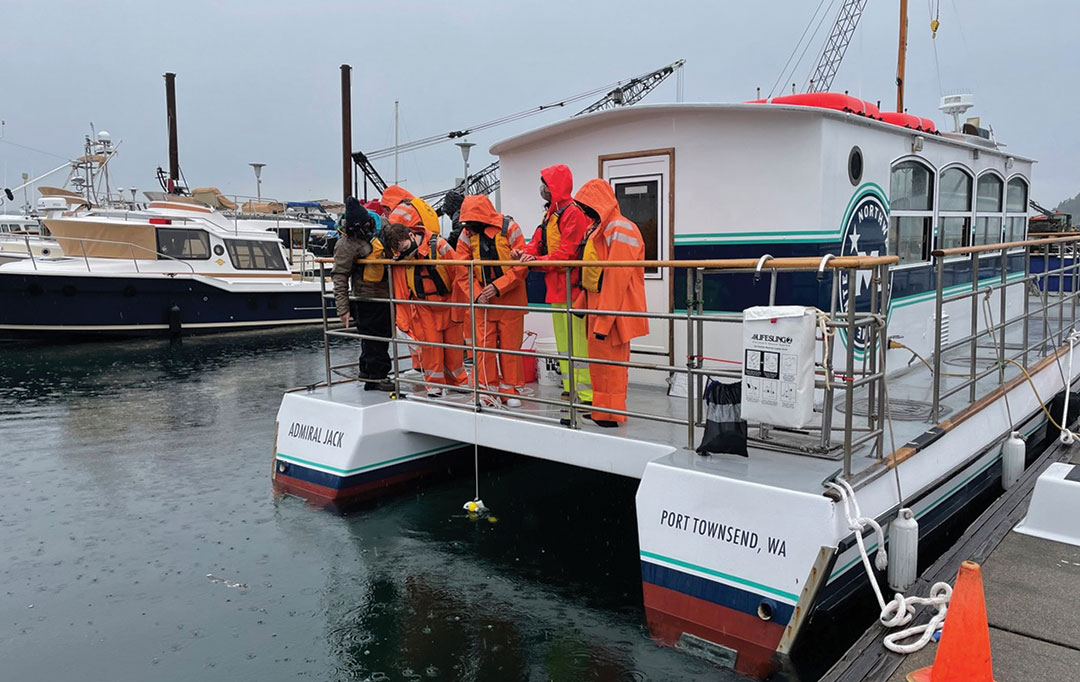
The students at Maritime High balance traditional classroom learning along with field work. They spend considerable time aboard Admiral Jack, the Northwest Maritime Center’s 45-foot converted passenger ferry. While on board, students learn the basics of navigation and watch-standing while also exploring aquaculture and other marine research.
Hands-on projects completed during the first year included canoe building, raising fish within the classroom and visits to a maritime construction firm. Broadly speaking, the program aims to introduce students to a wide range of marine experiences, Holloway said. The academic model is loosely based on the New York Harbor School in New York City.
“A lot of kids really just wanted to have a different context of learning from that of a traditional high school setting,” Holloway said. “That is why Maritime High School was really a good choice for some of our students, even if they do not have a maritime background.”
The student body at Maritime High is diverse — even for a large metro area like Seattle. People of color make up nearly 80 percent of its enrollment, and many live around industrial sections of the Duwamish River that are served by ships or barges. Many had little or no experience with the maritime industry before enrolling.
Holloway, who gave the keynote presentation at the Interferry conference in Seattle in early October, said the school is focused on building diversity within the maritime trades. He cited data indicating women and people of color make up only a small fraction of Washington’s maritime workforce.
“My goal is to think about diversity, equity and inclusion within the maritime industry and the maritime field,” he told the global audience at the conference. “If you look at workforce opportunities, there is a lot of diversification there. But if we look at the workforce in general, the human capital, it is not as diverse.”
In a video promoting the school, former Foss President Will Roberts echoed Holloway’s point about building diversity within the industry. Although he acknowledges some students will go on to other careers, they will carry with them a great appreciation for the ocean and the marine fields.
“I believe this high school is going to be a multiplier for the maritime industry,” said Roberts, who serves on the school’s advisory board. “If you think about 400 students that now have an appreciation for the place they live, that in itself is just going to be wonderful.”
Delmas Whittaker, who leads the Port of Seattle’s Marine Maintenance department, sees an opportunity to build connections with students as they consider different career paths.
“The young people that are part of these programs will get to see that the bounds of their opportunities are limitless,” he said. “We will be able to cultivate so much new talent right here at home.”
For now, Maritime High is operating from a temporary home located about a mile from runway 34 L at Sea-Tac Airport. Holloway said the school will be looking for a permanent building in the coming years, potentially aided by a bond to promote school construction.
In the meantime, he said the school’s primary need is for mentors from a wide range of maritime fields to work with students in their sophomore year. Financial donations, which support transportation, field work and other costs associated with the maritime education, are also appreciated.
For more details on the school, visit maritime.highlineschools.org.

